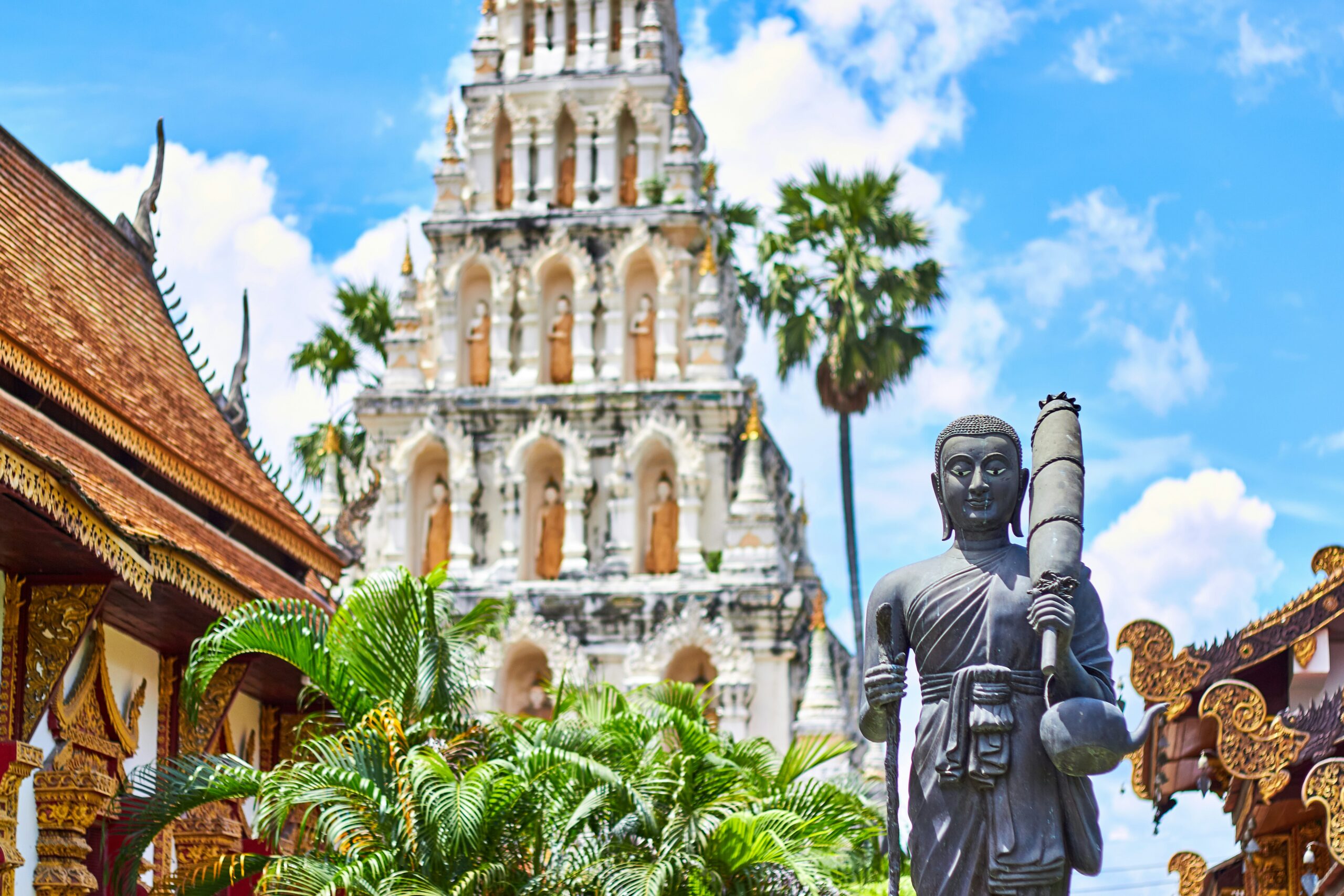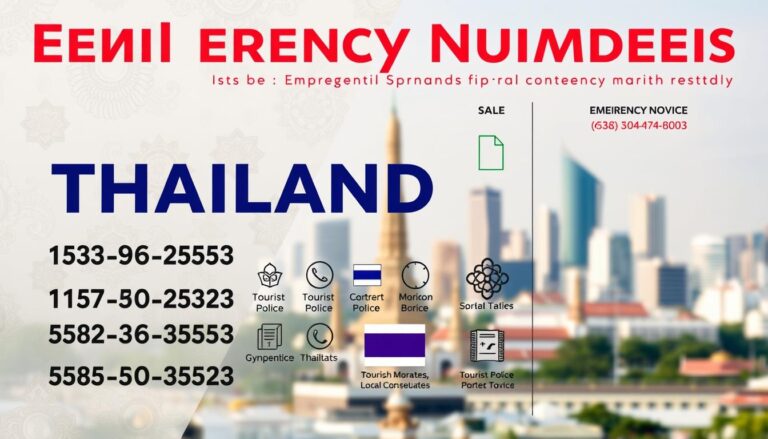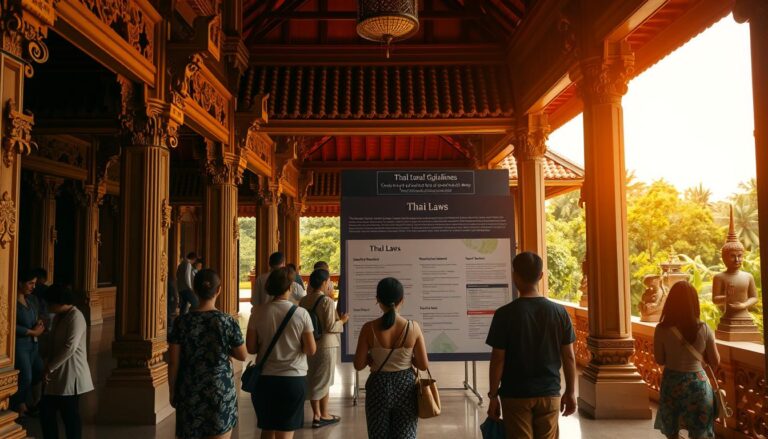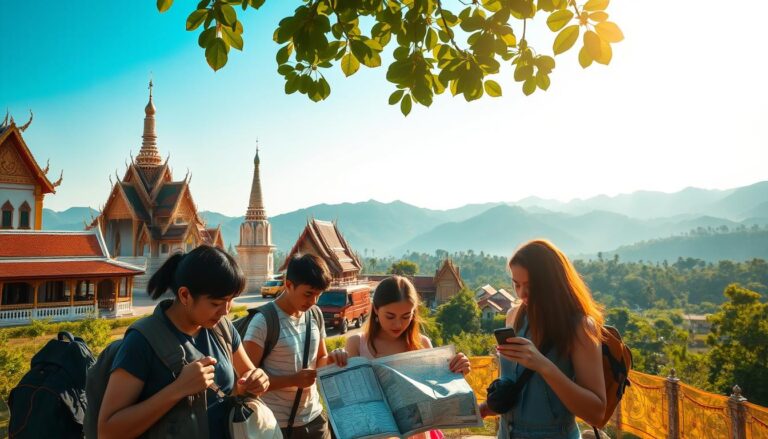Thailand Passport: 6-Month Rule & Blank Pages
What if your dream vacation ended before it even began—because of a single oversight in your passport? While most travelers focus on flights and hotels, your passport’s fine print could make or break your entire trip. Let’s cut through the confusion.
Many visitors assume their passport just needs to cover their travel dates. But immigration rules here require six months of validity beyond your arrival date—even for short stays. Why? It’s a safety net for unexpected delays, medical emergencies, or itinerary changes. Forget this rule, and you might face a harsh reality at the border.
Blank pages matter too. Each entry stamp consumes space, and some visas require entire pages. While officials rarely check financial proof or return tickets, they always inspect passports. Whether you’re arriving visa-free or with pre-approval, these rules apply to everyone.
Key Takeaways
- Your passport must have six months’ validity remaining after your arrival date
- At least two blank pages are needed for entry and exit stamps
- Non-compliance can lead to denied boarding or entry
- Rules apply equally to visa-free visits and pre-approved visas
- Check expiration dates and page space before booking flights
Understanding Thailand Passport Requirements
Imagine arriving at your departure gate only to face rejection because your passport’s expiration date doesn’t meet foreign regulations. This scenario happens more often than you’d think. Let’s simplify the two critical rules that determine whether you’ll clear immigration smoothly.
Why Six Months Matter
Your passport must be valid for six months beyond your arrival date – not your departure date or visa application date. This buffer protects against unexpected events like flight cancellations or medical emergencies. For example, if you plan to arrive on December 1, your passport should remain valid until at least June 1 of the following year.
Blank Pages Aren’t Optional
Immigration stamps and visa stickers require dedicated space. While two blank pages are recommended, frequent travelers should aim for more. Officers need clean surfaces to mark your entry and exit dates clearly. Damaged or marked pages might lead to complications, even if they appear partially empty.
These requirements apply universally – whether you’re visiting for business, leisure, or transit. Always check your passport’s expiration date and available space before booking flights. When in doubt, renew early to avoid last-minute stress.
Overview of Thailand Visa Options for Travelers
Choosing the right entry permission can feel like navigating a maze. Let’s simplify your choices. Three pathways exist for most short-term visitors, each with distinct rules and benefits.
Visa-Free Entry Essentials
Passport holders from 93 nations enjoy hassle-free access. This includes Americans, Australians, and British citizens. You can stay up to 60 days with a potential 30-day extension at immigration offices. A seasoned traveler once noted:
“Visa-free doesn’t mean preparation-free—always carry proof of onward travel and accommodation details.”
Visa on Arrival Fundamentals
Available to 31 nationalities like Indian and Mexican travelers, this option grants 15-day stays. The 2000฿ fee (≈$60) is payable at designated airport counters. Ensure you have:
- A confirmed return ticket within 15 days
- One passport-sized photo
- Equivalent of 10,000฿ in cash
Tourist Exemption Scheme Insights
This special arrangement expands visa-free privileges. It allows dual-entry possibilities for some nationalities. Check your eligibility through official government portals before packing.
| Entry Type | Eligible Countries | Max Stay | Fee |
|---|---|---|---|
| Visa-Free | 93 | 60 days | None |
| Visa on Arrival | 31 | 15 days | 2000฿ |
| Tourist Exemption | Varies | 30-60 days | Varies |
Extensions typically cost 1900฿ and require visiting local immigration offices. Processing times vary, so plan extensions well before your permitted period ends.
Thailand Travel Thailand visa Requirements – A Detailed Look
Navigating entry rules can be tricky if you’re unsure where to start. The official e-visa portal offers a personalized eligibility tool that simplifies the process. Simply select your nationality and travel purpose to receive tailored guidance.
Who Needs to Check These Requirements?
Three groups should verify their status before packing:
- Citizens from nations not covered by visa exemptions or arrival schemes
- Travelers planning stays longer than standard allowances
- Those visiting for non-tourism purposes like work or study
Even if your country appears on exemption lists, recent policy changes might affect you. A tourism operator shared:
“We’ve seen cases where repeat visitors needed visas despite previous visa-free entries.”
| Eligible For | Stay Duration | Pre-Approval Needed? |
|---|---|---|
| Visa-Free | Up to 60 days | No |
| Visa on Arrival | 15 days | No |
| Tourist Visa | 90 days | Yes |
Always cross-check requirements through government channels. Application processes vary by consulate, so allow extra time for document preparation. Frequent travelers should bookmark the official portal for real-time updates.
How to Apply for a Thailand Visa
Securing entry approval shouldn’t feel like solving a puzzle—especially with modern digital solutions at your fingertips. Whether you qualify for streamlined online processing or need embassy assistance, understanding your options saves time and stress.
Digital Submission Made Simple
Eligible travelers from 18 nations can use the e-visa portal. This includes applicants from China, Ethiopia, and Bulgaria. Follow these steps:
- Create an account on the official platform
- Complete the digital form with passport details
- Upload required documents like flight itineraries
- Pay fees electronically (credit/debit cards accepted)
Approvals typically arrive within 3-5 business days. One recent applicant shared:
“The online system flagged missing info immediately—fixed it in minutes instead of waiting weeks.”
In-Person Embassy Procedures
For non-e-visa countries, visit your nearest diplomatic office. Required materials often include:
- Completed physical application form
- Passport-sized photos with white background
- Proof of financial means (bank statements)
Processing times vary—some embassies issue approvals in 48 hours, others take 10 days. Always apply well in advance of your trip.
| Feature | Online eVisa | Embassy Application |
|---|---|---|
| Processing Time | 3-5 days | 2-10 days |
| Required Documents | Digital uploads | Physical copies |
| Eligibility | 18 nations | All others |
Always carry printed approvals—airlines often request them during check-in. Double-check entry rules 72 hours before departure, as policies can change unexpectedly.
Comparing Visa on Arrival and Tourist Visa Exemption
Ever stood at a crossroads wondering which path saves time and money? For many visitors, choosing between these two entry methods feels exactly like that. Let’s unpack what sets them apart so you can breeze through immigration.
Cost, Duration, and Process Differences
The Tourist Visa Exemption works like a fast lane. If your nationality qualifies, you’ll get stamped in without fees for up to 60 days. Need more time? Extend at local offices for 30 extra days. Perfect for explorers wanting flexibility.
Visa on Arrival requires a pit stop. You’ll queue at designated counters, pay 2000฿ (≈$60), and submit documents. Your stay caps at 15 days—no extensions. Bring:
- A return ticket within 15 days
- Proof of funds (10,000฿ equivalent)
- One passport photo
| Feature | Visa Exemption | Visa on Arrival |
|---|---|---|
| Cost | Free | 2000฿ |
| Max Stay | 60 days | 15 days |
| Extension | Yes | No |
Nationality determines your options. Check official lists—some countries qualify for both. A backpacker recently shared:
“I saved $60 using the exemption, but my friend from Mexico had to apply on arrival.”
Choose wisely based on your plans. Short city breaks? VoA works. Extended adventures? Aim for the exemption. Either way, double-check requirements before boarding.
Preparing Your Passport and Documents
Your adventure begins long before you board the plane—it starts with meticulous document preparation. Even seasoned travelers can overlook crucial details when excitement takes over. Let’s transform paperwork from a chore into confidence.
Checklist for Essential Travel Documents
Start with your most valuable item—the golden ticket to international exploration. Open your booklet and verify these three essentials:
- Expiration date extends six months past your arrival day
- At least two completely blank pages
- No significant damage or markings
Next, gather supporting materials. Airlines and immigration officers may request:
- Printed flight itinerary showing onward travel
- Bank statements proving access to 20,000฿ (≈£450)
- Accommodation address for arrival card completion
A seasoned backpacker once advised:
“Photocopy your main page and entry stamp section—leave one copy at home, carry another separately from your original.”
| Essential | Recommended | Optional |
|---|---|---|
| Valid passport | Travel insurance | Vaccination records |
| Onward ticket | Emergency contacts | Local SIM card |
Organize everything in a waterproof folder. Digital backups in cloud storage add extra security. Double-check requirements 48 hours before departure—policies can change without warning.
Finally, test your setup. Can you quickly present documents at check-in? Does your accommodation address fit neatly on the entry form? Smooth preparation leads to stress-free exploration.
Exploring Digital Nomad and Long-Term Visas
What if your career could thrive alongside island-hopping adventures? New entry schemes now make extended stays more accessible than ever. Let’s unpack options that let you work from white-sand beaches without frequent border runs.
Destination Thailand Visa Benefits
Launched in 2024, the Destination Thailand Visa (DTV) redefines flexibility. Valid for five years, it allows multiple entries with up to 180 days per stay—extendable for another half-year. Ideal for freelancers or those joining cultural programs like Muay Thai training.
Eligibility extends beyond remote workers. Participants in cooking classes or film festivals may qualify under “soft power” categories. At 10,000฿ (≈$295), it’s significantly cheaper than traditional options.
Long-Term Resident (LTR) Visa Considerations
High earners eyeing multi-year stays should explore the LTR option. This premium choice demands proof of $80,000 annual income and $50,000 insurance coverage. The 50,000฿ fee (≈$1,380) targets investors and skilled professionals.
| Visa Type | Validity | Max Stay | Cost |
|---|---|---|---|
| DTV | 5 years | 180 days | 10,000฿ |
| LTR | 10 years | 5 years | 50,000฿ |
| Tourist | 3 months | 60 days | Free |
One remote developer shared:
“The DTV eliminated my visa-run stress—I finally feel settled here.”
Choose based on your income and timeline. Always verify requirements through official portals before applying.
Planning Your Arrival and Immigration Process
Stepping off the plane into tropical warmth should feel exciting, not stressful. Knowing what to expect at border control helps you start your journey smoothly. Let’s break down the steps for both air and land entries.
Airport Immigration Walkthrough
Follow signs to immigration after disembarking. Look for lanes marked “Visa on Arrival” or “All Passports” depending on your status. Officers will scan your fingerprints, take a photo, and stamp your booklet—keep boarding passes handy for reference.
Crossing Land Borders
Overland entries from Malaysia or Cambodia involve similar checks but with fewer queues. Present your passport and completed arrival card at designated booths. Some crossings close overnight—verify operating hours beforehand.
| Entry Point | Processing Time | Documents Required | Transport Options |
|---|---|---|---|
| Major Airports | 15-45 minutes | Passport, arrival card | Licensed taxis, airport rail |
| Land Borders | 10-30 minutes | Passport, proof of funds | Pre-booked buses, tuk-tuks |
After clearing checks, head to official taxi stands marked with yellow signs. Avoid touts offering “special deals”—licensed drivers use meters. One recent traveler advised:
“Keep small bills ready for tolls. Drivers rarely carry change for 1000฿ notes.”
Save your entry stamp photo—it helps with hotel check-ins and SIM card purchases. Double-check departure dates to avoid overstay fines later.
Safety Precautions and Regional Advisories
Peace of mind comes from smart preparation. While most visits go smoothly, staying informed helps you navigate local nuances confidently. Let’s explore practical ways to protect yourself and your plans.
Travel Safety Tips
Keep valuables secure in crowded spaces like markets or transit hubs. Use anti-theft bags and avoid flashing expensive gadgets. Stay alert in tourist hotspots—distractions create opportunities for pickpockets.
Area-Specific Warnings
Some regions have unique advisories. Coastal areas may have strong currents, while nightlife districts require extra caution with drink safety. Check government websites for real-time updates on local conditions.
Handling Scams and Fraud
Beware of “too good to be true” offers for tours or transportation. Insist on metered taxis and confirm prices upfront. If pressured, walk away politely. Report suspicious activity to local authorities immediately.
Trust your instincts—most issues can be avoided with common sense. Share your itinerary with someone back home and save emergency contacts offline. Safe journeys begin with awareness, not anxiety.






